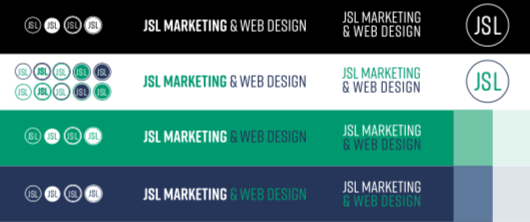Brand awareness is critical to your overall marketing strategy, but it can be difficult to build! Marketing takes time and that’s something small businesses don’t have. Many business owners focus their marketing efforts on creating sales to drive revenue and grow their business. That strategy makes sense from a business perspective.
If you’re a small business, you want to know if your marketing dollars are having an impact. There is nothing wrong with quantifying the results of your marketing.
The problem arises when business owners neglect ANY advertising or marketing that doesn’t create an IMMEDIATE sale. It might sound smart to only focus on revenue-generating marketing tactics, but this strategy has consequences. Marketers call tactics that seek only to make the potential customer aware of the business, not drive an immediate sale, “brand awareness plays.”
Business owners often are skeptical about this approach. Why spend money on advertising or marketing if it won’t generate an immediate sale?
The answer is pretty simple: your customer’s awareness of your brand is the cornerstone of your entire business. Without widespread brand awareness, you just can’t hit your revenue goals. To help further your marketing knowledge, our team put together our thoughts on why brand awareness is such a crucial part of your marketing!
Read On To Learn More About Brand Awareness!
Brand Awareness Is The First Step To Making A Sale
Brand awareness is the first step of the marketing funnel, regardless of your industry or business model. All customers go through the following mental journey before they purchase, whether they’re looking for a project management software for an engineering firm or a new wine for date night.
- Brand Awareness: Your customer learns about your business. This knowledge might be extremely high-level, but they understand you offer a product or service that might solve a problem of theirs.
- Consideration: The customer is contemplating purchasing your product or service. This process could be as simple as reading a wine blog review of your new pinot noir or as complex as watching several webinars on the best project management software. Regardless of what the process looks like, the customer is actively considering buying.
- Intent: The potential customer is displaying intent to purchase, but they have not YET become a won customer. (Think of searching for your new pinot noir via a search engine.)
- Purchase: The sale is complete! The customer has purchased from you.
- Delight: The past customer is so satisfied with their purchase that they become a repeat customer. They may even recommend others to you through word of mouth or become a spokesperson in your marketing materials!
Brand awareness is literally the first step of this process. A lot of business owners want to see their dollars spent lower in the marketing funnel, driving purchases and winning repeat business. To use our wine example, showing a Google Ad to the searcher for your online store would be the “intent” stage of the funnel. Your hypothetical vineyard could use email to send out a discount code to the purchaser in the “delight” stage to win continued wine purchases.
It’s easy to see the dollars won in the intent, purchase, and delight stages. After all, at these stages, purchasing is more likely, so it makes sense to put money here if you would like to see an immediate return on investment.
However, there’s one problem with this approach. Without general brand awareness of the product in question, your newfound wine enthusiast or project management customer would never have purchased. There needs to be some general understanding of what products and services you offer and without brand awareness, your potential customers can never consider purchasing from you.
Brand Awareness Is Subtle
If your business depends on quick decision purchases, you need brand recognition. The reason why is pretty simple. There aren’t many opportunities to market to existing customers or reach those researching your brand.
Take soap for instance. While it is theoretically possible to research a new soap, most of us probably pick up soap when out at the nearest drugstore. If you’re a soap brand, you don’t have many opportunities to make a case for your brand as your potential customer considers purchasing. They’re likely already in the soap aisle when they’re skimming the different brands.
That’s why general advertising is so important. Your potential customer is likely making a snap-second decision in the aisle and without general advertising to raise awareness of your brand, you’re likely not getting the sale.
However, general advertising is also useful for longer decision-making cycles. Take car manufacturers. It can take ten years or more to buy a luxury car. While “intent” and “purchase” stage marketing is critical for these long sale cycles, general branding is still important to stay top of mind. While prospects research and contemplate buying a complex product like a car or project management system, they can become disinterested and stop considering your product. After all, this decision-making process is longer, so there’s more time to forget about the product in question. That’s why general advertising is so critical to keep the potential customer aware of your brand.
It also takes time for advertising to make an impact. To go back to the wine example, maybe your potential customer saw an ad for your wine on YouTube and then promptly forgot about the product. (Remember, the average American sees over 2,000 ads in a day and it can be easy for a single ad to be drowned out in that chatter.)
You may need three or four impressions to really make an impact on your wine enthusiast before they even read a review of that pinot noir. If you keep all of your marketing dollars in Pay-Per-Click advertising, you may see that customers purchase after clicking your Google Ad and think that Google Ads is your most important marketing channel. However, that view ignores the fact that your user saw your advertising well before they ever considered searching for your wine.
In all of these examples, the customer likely isn’t aware of the impact that advertising has had on them. The customer likely would have not consciously remembered a “top-of-the-funnel” advertisement, whether they’re making a snap-second decision on soap, a long-term decision on a luxury vehicle, or trying a new wine.
However, regardless of if they remembered your initial ad, they likely wouldn’t have purchased without first coming into contact with your brand’s messaging! Focusing on the final purchase while neglecting the rest of the awareness, consideration, and research that led to that purchase is a limited view of your marketing.
Brand Awareness & Messaging Align
One of the best ways to differentiate your brand from the competition is to have a well-defined brand message that is about more than products and business propositions. Consumers are consistently demanding more socially-conscious messaging and/or human value propositions from their favorite brands.
Another problem with focusing purely on purchases is that it’s hard to make a human-centered brand message on a digital store checkout page or via a 90-character Google Ad. These mediums are great for finalizing sales, but they’re not a great place to speak to the values of your business.
To pique the interest of prospective clients while simultaneously trumpeting your brand values, you’ll need some sort of brand awareness advertising. Many businesses use high-level brand awareness tactics like video or social advertising to tell potential customers about their values and mission. You need to get your potential customer’s attention, and speaking to your brand values is a great way to do so.
Here are a few quick tips for speaking to your brand values in an advertisement!
- Keep It Brief. You’ll only have 30 seconds at most and possibly only a second on social media. Find a pithy way to make an impact.
- Don’t Sermonize. This isn’t the place to lay out your five-point plan to change the world. Top-level and feel-good statements work for your values.
- Be Authentic. Whatever your brand values are, be truthful. Your advertising needs to come across as real, so be sure that your ad doesn’t feel fake or forced. Generally, having consistent brand values across all advertising is a good rule of thumb for determining if you’re being authentic.
Technology Improvements Have Reduced Marketing Costs
Small business owners are often skeptical about brand awareness marketing due to its cost-prohibitive nature. We understand why.
Before the internet, broadcast television, billboard, and newspapers were the main mediums for advertisers to reach the general market. These mediums often cost premium dollars, were hard to measure, and couldn’t be targeted to individual users based on set characteristics. This meant that most businesses needed a large budget to actually use brand awareness marketing to their advantage.
Thankfully, the marketing landscape has changed considerably since the 80s. New mediums have entered the picture and have reduced the barrier to entry to the advantage of small businesses. For instance, minimums for social media advertising can be as low as a few hundred dollars and can also be targeted to unique characteristics, making it a great option for small businesses to reach new customers.
Real-time bidding advertising has also made it easy to use digital audio and Youtube as brand awareness channels to increase awareness among potential customers. The point is that small business owners don’t need to put down the money for a primetime broadcast spot or a centrally-located billboard to increase brand awareness. New tactics mean that business owners can only spend what they’re comfortable with while also better targeting and measuring impact. That’s a great development in the marketing space and it’s one to take advantage of!
Increase Your Brand Awareness With JSL Marketing & Web Design
Are you interested in growing your brand awareness? Our marketing experts are standing by to discuss any of the following.
- Social Ads
- Video Production
- Direct Mailers
- & More!
If you think that your customers understand what your business does, but need to see more direct and actionable marketing progress, we can also meet with you to help design an impactful and powerful marketing funnel! Depending on your unique needs and overall business strategy, we may recommend ….
- Automated Email Campaigns
- Videography & Graphics
- Pay-Per-Click Advertising
- Content Marketing
- Reputation Marketing
- Web Design & Web Development
- & More!
Reaching the right audience is important, but it’s only the first step. Use your marketing mediums to guide your potential customers through awareness and consideration to intent and purchase. Once you have won a customer, don’t forget to keep remarketing to them!
If you need the expertise and attention of a full-service marketing agency, reach out to JSL Marketing & Web Design through our contact form!











